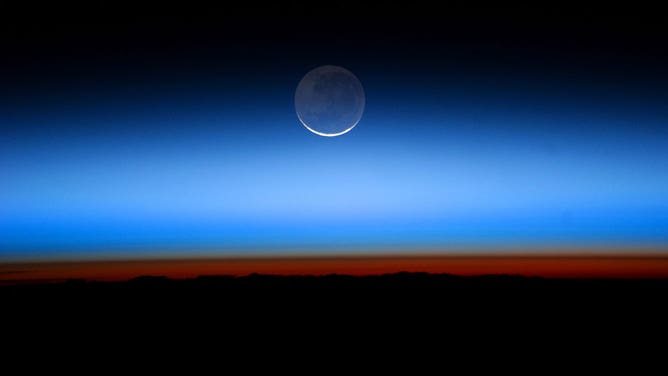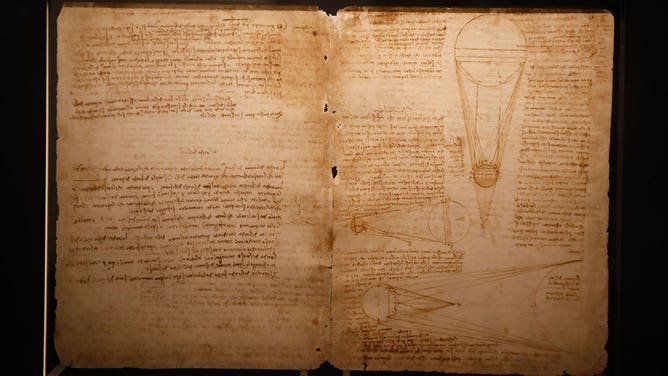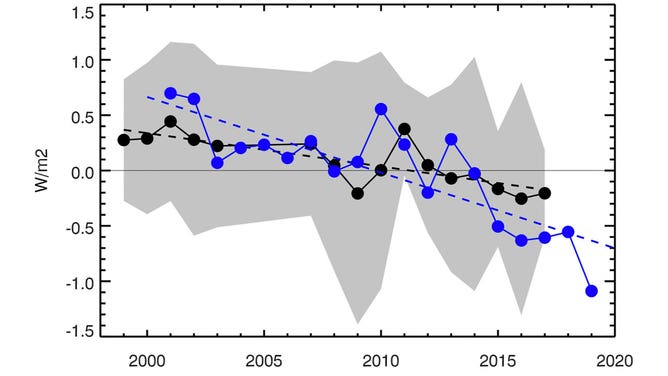Earthshine: How we measure one of the least understood climate parameters
Study finds light reflected by Earth has reduced but scientists aren’t sure what that means for climate change

Astronaut Photograph ISS028-E-20073 was taken on July 31, 2011, and is provided by the ISS Crew Earth Observations Facility and the Earth Science and Remote Sensing Unit, Johnson Space Center.
(NASA)
A study published earlier this year showed that the amount of light being reflected by Earth has dimmed in recent years, and scientists are now trying to figure out what that means for our planet.
The 20-year study conducted by researchers at the Big Bear Solar Observatory looked at earthshine. This is how scientists measure how much light Earth is reflecting.
Philip Goode, former director of the observatory and now a distinguished research professor at the New Jersey Institute of Technology, said the team had two goals when they started their research in 1998.
"We wanted to know if we could see any effects of the solar cycle, the sun's 11-year sunspot cycle, on the Earth, in the clouds," Goode said. "Also we knew that the Earth's reflectance is the least well understood of the three fundamental climate parameters, being the sun's output, the Earth's reflectance and greenhouse gases."
What is earthshine?
First written about by Leonard da Vinci, earthshine is the light that is reflected by Earth onto the moon. In fact, it’s called the Da Vinci Glow. It’s the light that allows us to sometimes see the full circle of the moon even when it’s not brightly lit by the sun.

This picture taken on October 23, 2019 shows Studies on the Ashen Glow of the Moon, from Leonardo Da Vincis scientific treatise Codex Leicester, during the opening of the exhibition " Leonardo da Vinci ", on October 22, 2019 at the Louvre museum in Paris.
(FRANCOIS GUILLOT/AFP via Getty Images)
"You look at a quarter moon, but you can see the whole moon and the dark part is illuminated in sunlight reflected off the Earth, to the moon and then back to you at night," Goode said. "So the moon is acting like a mirror, so we can see the reflected Earth light."
The amount of light that Earth reflects is determined by what the sunlight is hitting before it’s bounced back into space. Clouds, snow and ice have higher reflectance rates, or albedo, than land or the oceans.
Earthshine and climate science
Earth’s temperature is a delicate balance between the amount of energy the sun puts out and how much of that energy our planet sends back to space. The more heat Earth holds on to, the warmer the planet gets.
One of the ways scientists measure how much of that energy is being reflected is earthshine. The more sunlight Earth reflects, the less energy there is for the planet to trap.
Back to the study
Since the original goal of the earthshine study was to determine a solar cycle’s effect on clouds, Goode’s team wanted their study to last for two solar cycles, so they took earthshine measurements from 1998 to 2017.
WHAT IS THE 11-YEAR SOLAR CYCLE?
Goode said that when it came to analyzing the data, the first 17 years looked fairly flat with only small variations from time to time. However, it was the last three years of data that surprised the researchers.
"The reflectance had really decreased," Goode said. "So, at first we thought, 'Oh, we've done something wrong. We've forgotten something about the analysis.' So, we spent two or three months redoing, redoing and always got the same thing."
Goode said the team even used independent satellite data to compare with their data, and the results were the same – earthshine was down.

This chart shows how earthshine has reduced over the past two decades in watts per square meter.
(Geophysical Research Letters)
The cause is unclear, but Goode said there is speculation that it could be related to a natural cycle called the Pacific Decadal Oscillation – a cycle of warming and cooling in the Pacific Ocean. Goode said that during the first 17 years of the study, the oscillation was in a cool phase. The last three years happened during a warm phase.
"And, son of a gun, if, if somehow the warm water didn't do something like burn a hole in the low-lying clouds, let in more sunlight," Goode said. "That was a surprise."
The surprise was that, in theory, letting in more heat would lead to more evaporation and more air rising from the surface, which would create more clouds, which would lead to more reflectance.
Further study is needed
"We don't really understand what the climate system is going to do with that extra heat," Goode said. "Is it just going to make the Earth warmer or is it going to do something else? You know, when your first guess, which you're pretty confident of, is dead wrong, then you have to work and figure it out."
Goode said this study has led them to continue the research through the 2020s, hoping to better understand the role of Earth reflectance in climate science.
"It tells us that people like us, who are making these measurements, we need to continue and make more measurements, and it tells people who do the climate modeling that there is something that they're not accounting for that they need to worry about," Goode said. "So it makes work for all of us."
For now, though, scientists are stumped.